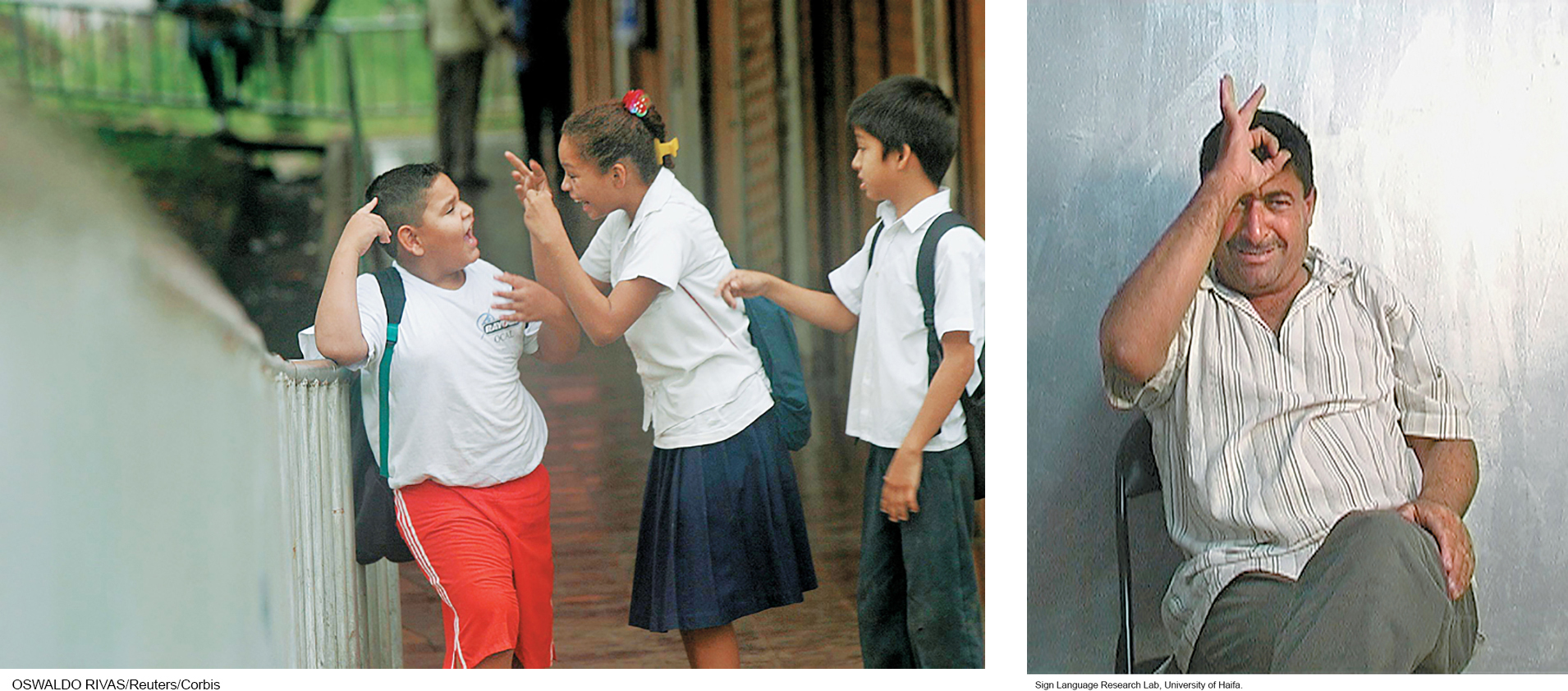
Giving Birth to a New Language In 1977, a special school for deaf children opened in Managua, Nicaragua. The children quickly developed a system of gestures for communicating with one another. Since then, the system of gestures has evolved into a unique new language with its own grammar and syntax— l- e-
Sign Language Research Lab, University of Haifa.